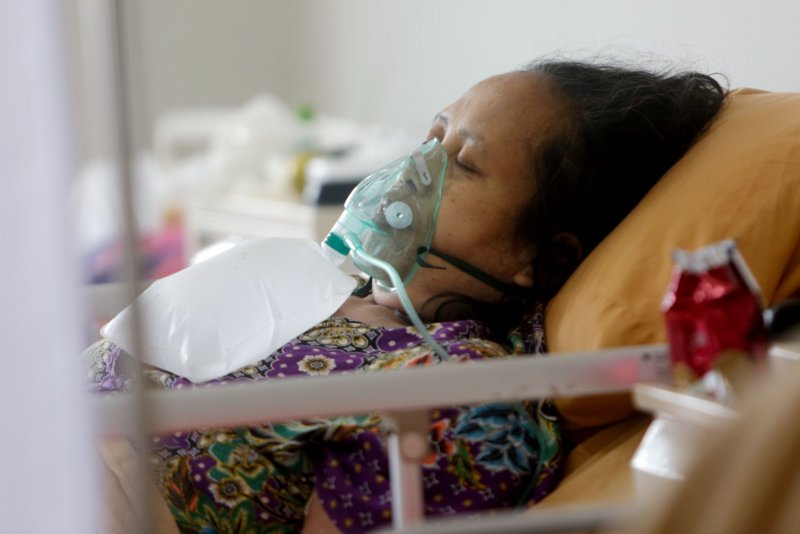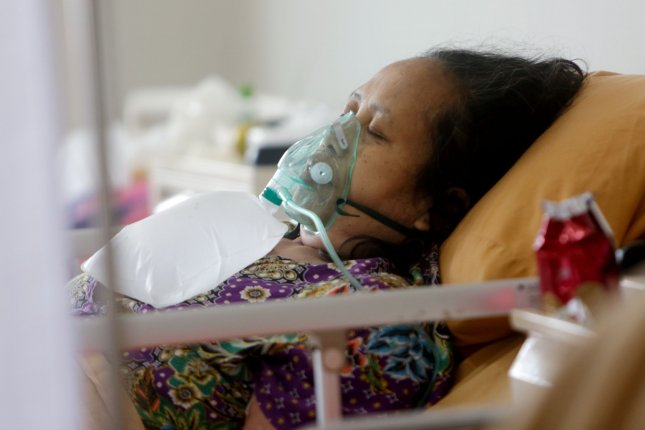American Indians and Alaska Natives appear to be at higher risk for death from COVID-19 despite having similar rates of chronic health conditions, a new study has found. Photo by Adi Weda/EPA-EFE
March 30 (UPI) — American Indians and Alaska Natives in the United States are more likely to die from COVID-19 than Black and White Americans, even without the chronic conditions that place people at higher risk for serious illness from the virus, a study published Wednesday by JAMA Network Open found.
Black Americans in Mississippi hospitalized with COVID-19 were 75% less likely to die from the virus compared to American Indians and Alaska Natives, the data showed.
Similarly, White Americans in the state hospitalized with the virus had a 77% lower risk for death after infection than these Indigenous populations, the researchers said.
This is despite American Indians and Alaska Natives in the study having similar or lower rates of heart disease, high blood pressure, diabetes and obesity compared to Black and White American participants, according to the researchers.
Previous research has found that having heart disease, high blood pressure, diabetes and/or obesity increases a person’s risk for serious illness and death from COVID-19 infection, making them “comorbidities” in medical terms, they said.
“American Indian and Alaska Native adults [were] younger than all other races when admitted [to the hospital] with COVID-19 and [had] a lower mean comorbidity prevalence than Black or White patients,” study co-author Leslie A. Musshafen told UPI in an email.
Still, “they had the longest average length of stay in the hospital and died while in the hospital at two to four times the rate of all other races,” said Musshafen, executive director of research at the University of Mississippi Medical Center in Jackson.
Since the start of the COVID-19 pandemic in March 2020, communities of color, including American Indians and Alaska Natives, have been at increased risk for infection, serious illness and death from the virus, research indicates.
This is due to many factors, including poorer overall health in these communities and lack of access to needed care services, studies have found.
Early in the pandemic, American Indian reservations experienced some of the worst COVID-19 outbreaks seen nationally.
The findings of this study are based on an analysis of data for nearly 19,000 people in Mississippi hospitalized with COVID-19 in 2020.
Most of the included patients were adults ages 50 to 75 years, and 54% were women, the researchers said.
Just over 1% of the patients in the study American Indians and Alaska Natives, while 49% were Black Americans and 49% were White Americans, according to the researchers.
COVID-19 deaths were evaluated against rates of 31 chronic health conditions known to increase the risk for severe illness from the virus for Black, White and American Indian and Alaska Native patients included in the study, they said.
For example, 27% of the American Indian and Alaska Native patients in the study had obesity compared with 33% of Black patients and 24% of White patients, the data showed.
In addition, 39% of the American Indian and Alaska Native patients in the study had “uncomplicated” high blood pressure, or high blood pressure without heart-related complications, the researchers said.
For the Black and White patients in the study, this figure was 47% and 48%, respectively, according to the researchers.
Despite these findings, American Indian and Alaska Native patients were more than twice as likely to die from COVID-19 as Black or White patients, the data showed.
“The significant impact that social determinants have on the health of all populations is undeniable, during the pandemic and beyond, [and] we must account for these complex factors to improve the health of a population,” Musshafen said.
“In Mississippi, for instance, a single Indian Health Service facility provides healthcare for American Indians across the entire state [and] those needing higher acuity care [there] had to be transferred to a facility in another region of the state, potentially delaying care,” she said.

